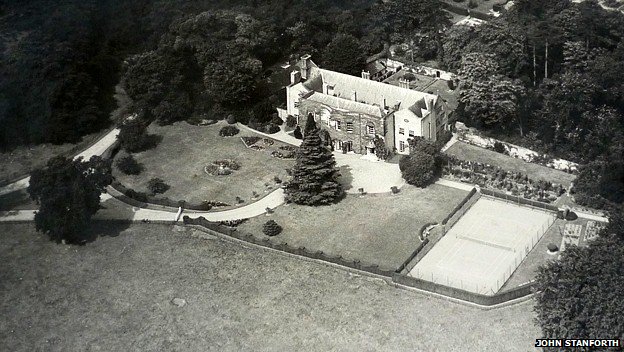Rollesby
|
| Rollesby lies north-west of
Great Yarmouth in the
Norfolk Broads.

Rollesby Hall
Research undertaken in the 1980s by the late Bernard
Davies of the Sherlock Holmes Society of London has
suggested that Donnithorpe Hall in The Gloria Scott
may have been modelled on Rollesby Hall.
|
| 'Donnithopre is a
little hamlet just to the north of Langmere, in the
country of the Broads. The house was an old-fashioned,
widespread. oak-beamed brick building, with a fine
lime-lined avenue leading up to it. There was excellent
wild duck shooting in the fens, remarkably good fishing,
a small but select library, taken over, as I understood,
from the former occupant, and a tolerable cook, so that
he would be a fastidious man who could not put in a
pleasant month there.' |
Davies worked out the location by looking at the Norfolk
railway network during the Victorian period and also
factored in the speed of horse and buggy transport and
the alignment of the sunset.
|
| 'We were dashing
along the smooth white country road, with the long
stretch of the Broads in front of us glimmering in the
red light of the setting sun. From a grove upon our left
I could already see the high chimneys and the flagstaff
which marked the squire's dwelling.' |
The Gloria Scott is notable in that it was
Sherlock Holmes' first ever investigation and confirmed
his interest in pursuing a career as a detective. Holmes
narrates the story to Dr Watson and explains how he
visited Donnithorpe as the guest of a college friend,
Victor Trevor, and how he subsequently uncovered a dark
secret about Trevor's father.Unfortunately Rollesby
Hall is no longer standing as it was demolished in 1950.
Norfolk also provided the inspiration for two other
Sherlock Holmes locations - namely
Cromer Hall which Conan
Doyle visited in 1901 and which was the blue-print for
Baskerville Hall in The Hound of the Baskervilles
and Happisburgh
(fictionalised as Ridling Thorpe) which furnished both
the plot and the setting for The Dancing Men.
|
|
|

